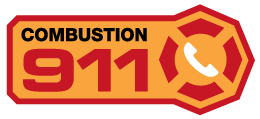An ignition transformer is a device used for direct spark ignition in combustion systems. Reliable, repeatable direct-spark ignition requires a high-energy spark — and the ignition transformer is what we use to generate the high voltage we need to create that spark. A typical supply in the USA is 120 volts, but we need to send Read More
Category Archives: FAQs
FAQ: Pressure Switches
Pressure switches are part of the safety chain, and vital to the safe operation of a combustion system. They are used to verify gas and air pressure, and they can be used to determine whether the gas valves are leaking. How does a pressure switch work? Pressure switches are simple devices that use a spring Read More
Ratio Regulator FAQ
What is a ratio regulator? You might be more familiar with another name. These are sometimes called cross-connected regulators, proportional regulators, or zero governors. Or any mix of those words, like proportional governor. Each of these names can give us an idea of what the device does. When working with combustion, you want a specific Read More
FAQ: Gas Filters
A gas filter is installed upstream of all other components on an industrial combustion system. It’s a simple item with a big job. What does a gas filter do? A gas filter is commonly provided with a cast aluminum housing, and the filtration is performed by the media inside. Depending on your application and the Read More
Elektrogas Proof of Closure FAQ pt 2
Welcome to round two of our proof of closure FAQ! Q: Do I need “Proof of Closure?” A: Proof of Closure (POC) is required by NFPA86 if the burner capacity is 400K BTU/Hr or more; in these cases, proof of closure is required on one valve in series, while visual indication is required on both. Read More
FAQ: What Does an Actuator Do?
What does an actuator do? An actuator drives a valve, causing it to move toward the open or closed positions. Actuators are present in all automatic valves, and can take the form of a motor (servo, pneumatic, hydraulic, etc), a solenoid, or something else. With a manual valve, your hand is the actuator. Actuators operate Read More
FAQ: What are Low NOx Burners?
What is NOx? Nitrogen Oxide (NOx), is a common byproduct of combustion processes. Whenever fuel (natural gas, propane gas, methane, coke oven gas, biogas, etc) is burned at high heat, NOx is produced. It is present in emissions from cars, trucks, boats, planes, and construction equipment, as well as industrial equipment like power plants, kilns, Read More
FAQ: What is a double solenoid valve?
You’ve probably run into the phrase “double solenoid safety shut-off valve” from time to time, but what does this mean? What makes a double solenoid valve different than a single valve? Are they required by NFPA86? Join us for answers to these questions, and more! What is a double solenoid valve? A solenoid valve uses Read More
FAQ: What is NFPA86?
If you work in combustion, then you’ve almost certainly heard the term NFPA86 before. Many people seem unsure about what exactly NFPA86 is. So, we’ve put together a handy overview to clarify this commonly heard phrase. NFPA NFPA is an organization (NFPA= National Fire Protection Association). Their goal is to reduce the threat of injury Read More
FAQ: What Does a Pressure Reducing Regulator Do?
Ever wondered what a gas pressure regulator is, or why you need it in your system? We’ve put together this FAQ to help answer your questions! What is a gas regulator? A regulator is a valve with the job of regulating system pressure. In industrial combustion, the two types of regulators we see most often Read More











